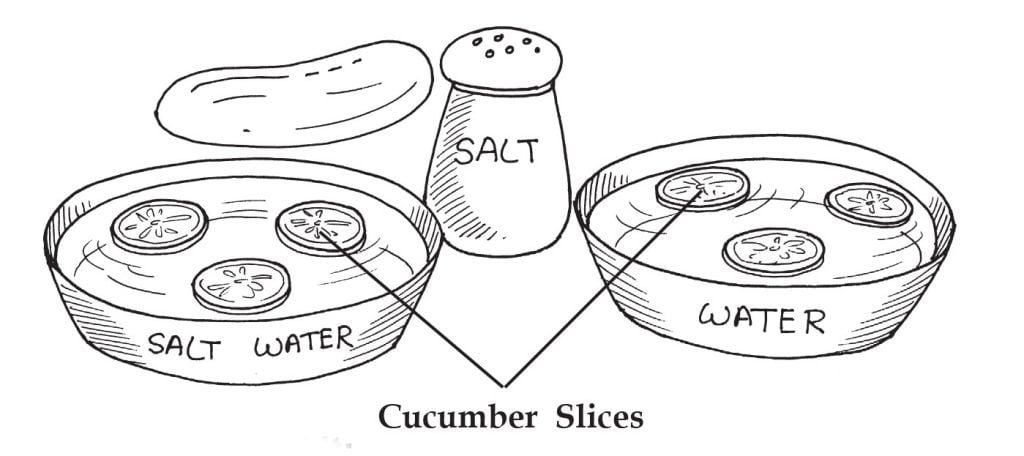
In this experiment, we will see how fish cells respond to fresh and salty water.
Things Required:
Salt
Measuring spoon-teaspoon (5 ml)
2 shallow bowls
1 small cucumber
Masking tape
Marker
Directions:
Fill both bowls one-half full with water. Stir 1 spoon of salt into one of the bowls; label this bowl salt using the tape to make the label.
Ask an adult to cut the cucumber into thin circular slices. Place 3 slices of cucumber into each bowl. Wait for 30 minutes.
Remove the slices and test their flexibility by carefully using your fingers to bend them back and forth. Now switch the slices, placing the ones that were previously in the salt water into the pure water. The pure water slices go into the salty water. Wait 30 minutes and again test the flexibility.
This Is What Happens:
The cucumber slices are limp after soaking in the salt water and firmer in the pure water.
Science Behind It:
Water moves into and out of living cells through the cell membrane. This movement is called osmosis. The water moves across the membrane toward where there are more dissolved materials in the water. Water moves out of the cells into the surrounding salty water because there are more salt particles in the water in the bowl than there is inside the cell.
The removal of water is called dehydration. Fish in salt water tend to dehydrate and they compensate for this water loss from their cells by drinking large amounts of sea water. They excrete salt from their gills and their kidneys remove very little water from the body. Freshwater fish, however, would bloat because the opposite happens to them. Water is absorbed into their cells. The surrounding medium is less salty. Therefore, they excrete large amounts of water through their kidneys. Both types of fish have to compensate for the loss and gain of water by their cells due to their environment.
